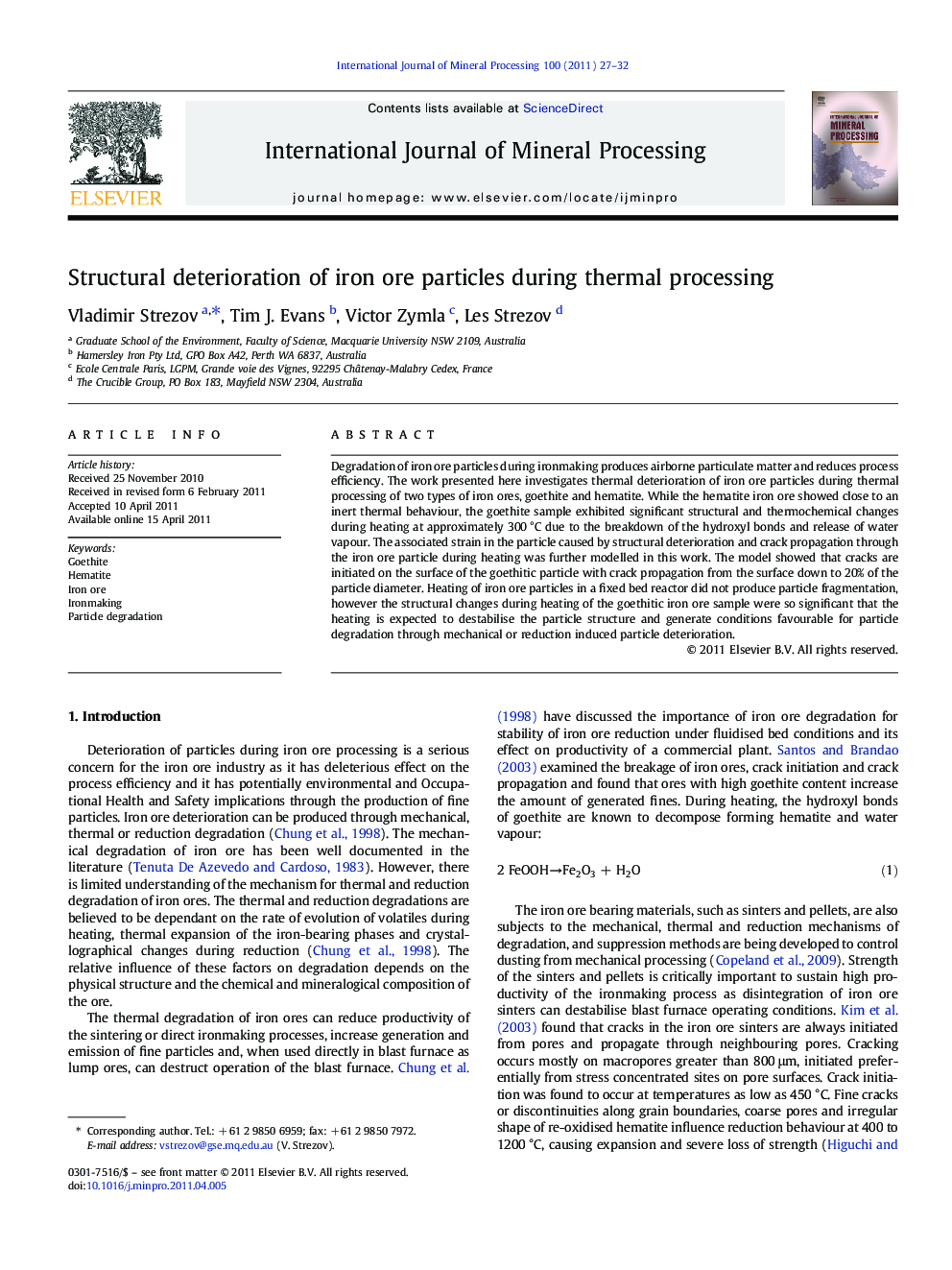| Article ID | Journal | Published Year | Pages | File Type |
|---|---|---|---|---|
| 214271 | International Journal of Mineral Processing | 2011 | 6 Pages |
Degradation of iron ore particles during ironmaking produces airborne particulate matter and reduces process efficiency. The work presented here investigates thermal deterioration of iron ore particles during thermal processing of two types of iron ores, goethite and hematite. While the hematite iron ore showed close to an inert thermal behaviour, the goethite sample exhibited significant structural and thermochemical changes during heating at approximately 300 °C due to the breakdown of the hydroxyl bonds and release of water vapour. The associated strain in the particle caused by structural deterioration and crack propagation through the iron ore particle during heating was further modelled in this work. The model showed that cracks are initiated on the surface of the goethitic particle with crack propagation from the surface down to 20% of the particle diameter. Heating of iron ore particles in a fixed bed reactor did not produce particle fragmentation, however the structural changes during heating of the goethitic iron ore sample were so significant that the heating is expected to destabilise the particle structure and generate conditions favourable for particle degradation through mechanical or reduction induced particle deterioration.
Research highlights► Effect of heating on particle deterioration of goethite and hematite iron ores. ► The goethite sample exhibited pronounced physical changes at 200 to 400 °C. ► The changes in the hematite sample were insignificant. ► Thermal deterioration of iron ore is due to decomposition of the hydroxyl bonds. ► Particle cracks are formed on the surface propagating down to 20% of the particle diameter.
